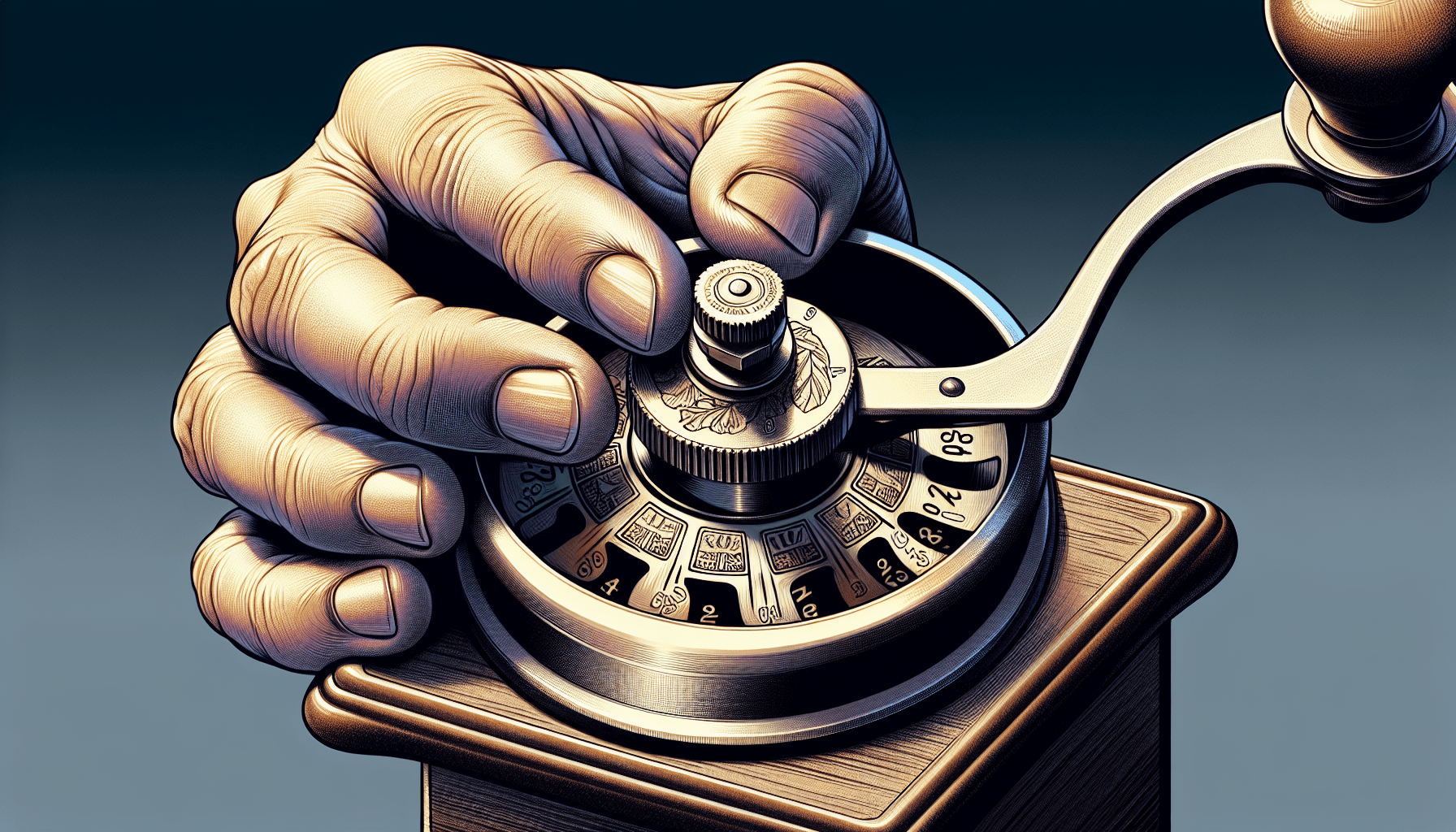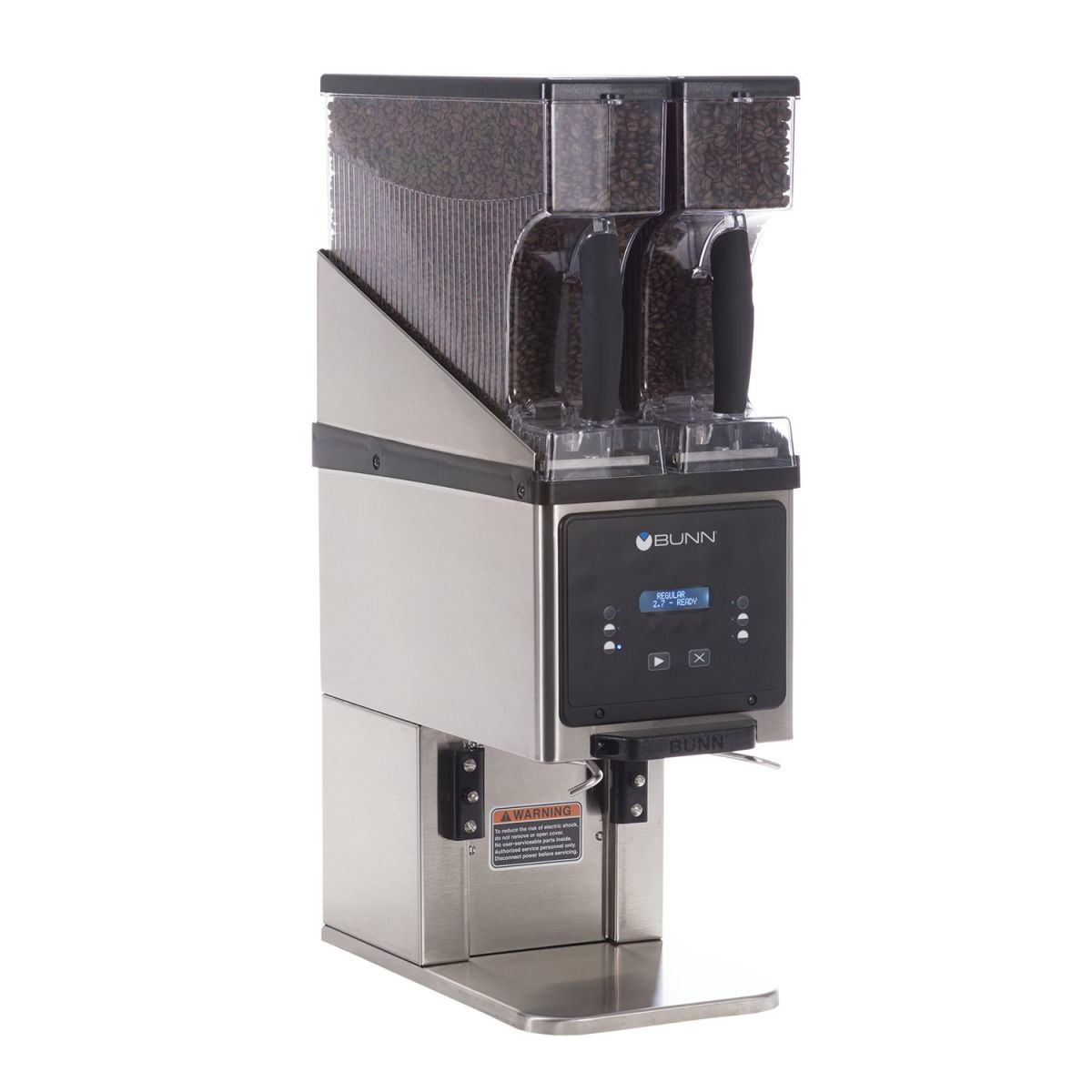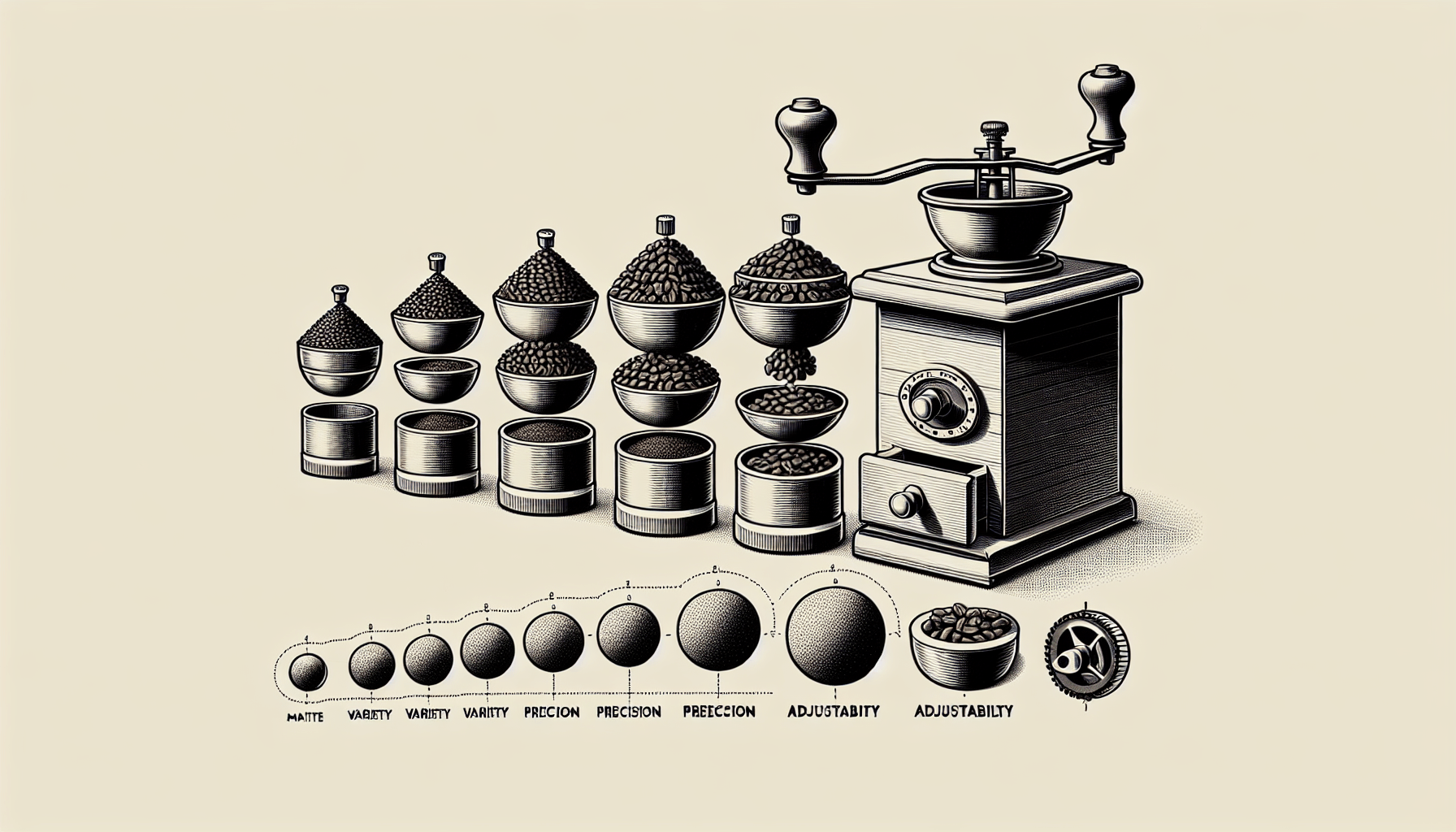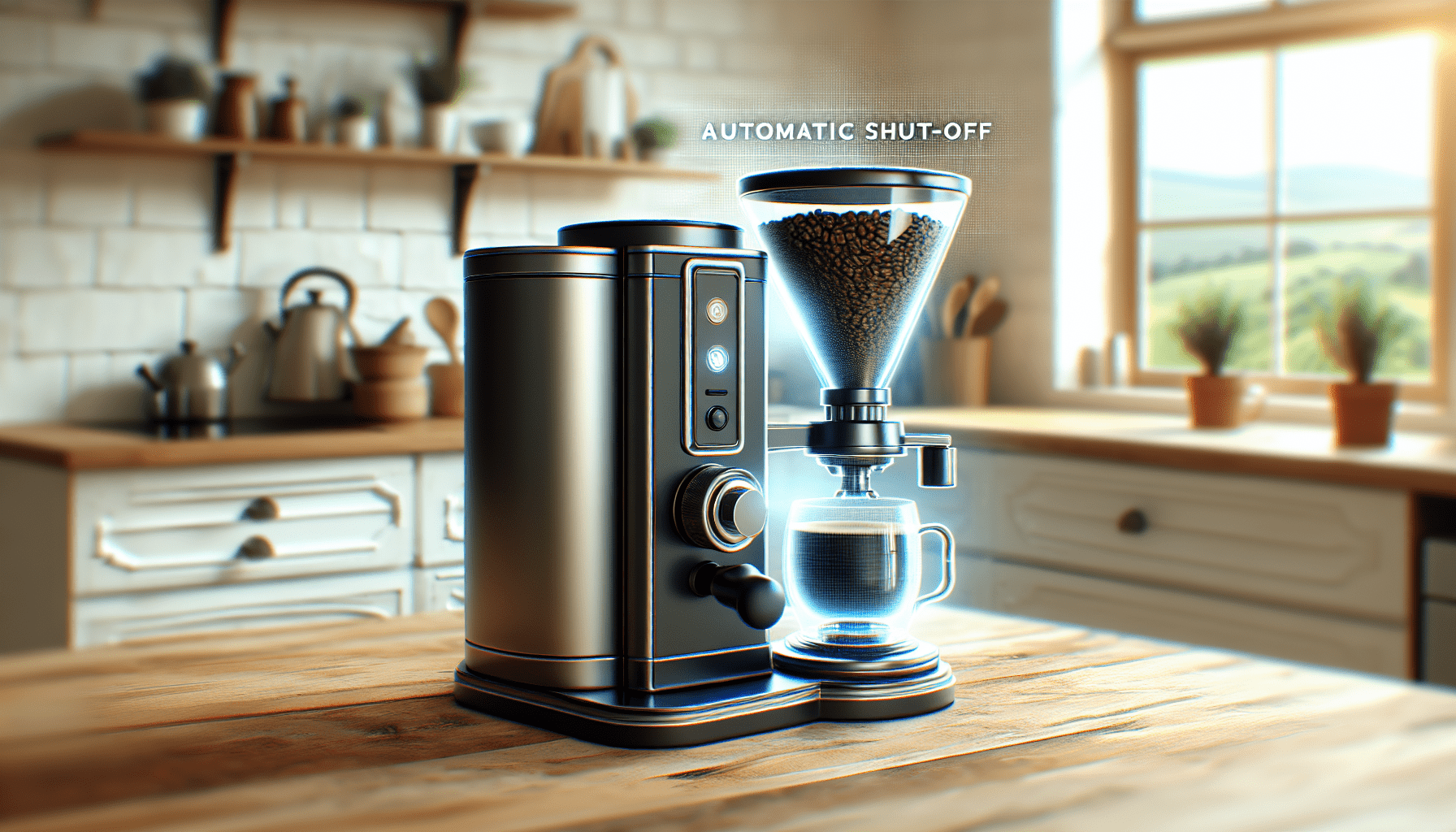Have you ever wondered if you have control over the grind size of your coffee? Well, the good news is that you can indeed adjust the grind size on a coffee grinder machine. Whether you prefer a fine grind for your espresso or a coarse grind for your French press, being able to customize the grind size can significantly impact the flavor and strength of your coffee. In this article, we will explore the different types of coffee grinders and how to adjust the grind size to suit your preferred brewing method. So, let’s dive in and unlock the secrets to achieving the perfect cup of coffee every time!
Understanding Coffee Grind Size
Why is grind size important?
Grind size plays a crucial role in the overall taste and flavor of your coffee. The size of the coffee grounds determines the rate at which the flavors are extracted during the brewing process. If the grind size is too coarse, the water will pass through too quickly, resulting in a weak and under-extracted coffee. On the other hand, if the grind size is too fine, the water will take longer to flow through, leading to over-extraction and a bitter taste. Therefore, finding the right grind size is essential for achieving a balanced and flavorful cup of coffee.
How does grind size affect the flavor of coffee?
The grind size directly affects the surface area of the coffee grounds and the extraction rate. Coarser grinds have less surface area, which means water will pass by quickly, resulting in a lighter flavor profile. On the other hand, finer grinds have a larger surface area, allowing for more contact with water and a more intense extraction. This can lead to a stronger and more complex flavor. Therefore, the choice of grind size can greatly impact the taste, strength, and overall quality of your coffee.
What are the different grind sizes?
Coffee grind sizes can be broadly categorized into four main types: extra coarse, coarse, medium, and fine. Each grind size is suitable for different brewing methods. Extra coarse is typically used for cold brews and French press, while coarse grinds are suitable for percolators and large espresso machines. Medium grinds are commonly used in pour-over and drip coffee makers, while fine grinds are ideal for espresso machines and Moka pots. Understanding the different grind sizes and their corresponding brewing methods will allow you to make the perfect cup of coffee for your preference.
Types of Coffee Grinders
Blade Grinders
Blade grinders are one of the most common types of coffee grinders and are often found in many households. They have a simple design, with a blade that spins quickly to chop the coffee beans into smaller pieces. While blade grinders are affordable and easy to use, they tend to produce inconsistent grind sizes. The blades can create uneven particle sizes, resulting in both over and under-extracted coffee. However, for casual coffee drinkers, blade grinders can still deliver a decent cup of coffee with some adjustments in technique and grind size.
Burr Grinders
Burr grinders, on the other hand, are known for producing consistent and uniform grind sizes. They have two revolving abrasive surfaces, or burrs, which crush the coffee beans into precise particles. This ensures that each particle is roughly the same size, resulting in a more even extraction. Burr grinders are available in both manual and electric options, with electric grinders offering more convenience and speed. While they tend to be more expensive than blade grinders, their ability to produce consistent grind sizes makes them a worthwhile investment for coffee enthusiasts seeking optimum flavor in their brew.
Manual vs Electric Grinders
When choosing between manual and electric grinders, it ultimately comes down to personal preference and convenience. Manual grinders require physical effort to grind the beans, but they offer more control over the grind size and can be more affordable. They are also portable, making them a great option for travel or camping. Electric grinders, on the other hand, provide convenience and save time, allowing you to achieve a consistent grind size at the push of a button. They are ideal for those who prefer ease of use and want a higher degree of precision in their coffee-making process.
Adjusting Grind Size on Blade Grinders
Limitations of blade grinders
While blade grinders can be a cost-effective option, they do have limitations when it comes to adjusting the grind size. Due to their inconsistent nature, achieving precise grind sizes can be challenging. However, with some experimentation and technique adjustments, you can still achieve satisfactory results. It is important to note that blade grinders are better suited for brewing methods that are forgiving to variable grind sizes, such as French press or cold brew, where the extraction time is longer and the grind size is less critical.
How to adjust grind size on a blade grinder
To adjust the grind size on a blade grinder, you can try using different grinding durations. Grinding for a longer duration will result in finer grounds, while shorter durations will produce a coarser grind. Keep in mind that the difference in grind size may not be very precise, and it might require some trial and error to find the right duration for your desired coffee strength. It is also important to shake or tap the grinder gently during the grinding process to ensure that all the coffee beans are evenly ground.
Adjusting Grind Size on Burr Grinders
Advantages of burr grinders
Burr grinders offer significant advantages when it comes to adjusting the grind size. Unlike blade grinders, burr grinders provide precise and consistent results. They allow you to make fine adjustments to the grind size, ensuring that you can achieve the perfect coarseness or fineness for your preferred brewing method. This precision gives you more control over the extraction, resulting in a well-balanced and flavorful cup of coffee each time.
Steps to adjust grind size on a burr grinder
To adjust the grind size on a burr grinder, you will typically find a dial or knob that controls the distance between the two burrs. Turning the dial clockwise will make the grind size finer, while turning it counterclockwise will make it coarser. It is recommended to start with a medium grind size and make small adjustments from there. After each adjustment, grind a small amount of coffee and brew a sample to taste the difference. This iterative process will help you find the ideal grind size for your brewing method and personal preference.
Factors to Consider When Adjusting Grind Size
Brewing method
The brewing method you choose will heavily influence the grind size you should aim for. Each brewing method has its own ideal grind size to achieve the best results. For example, French press and cold brew require a coarse grind, while espresso demands a fine grind. Researching and understanding the recommended grind sizes for different brewing methods will guide you in finding the right grind size.
Coffee bean origin
The origin of the coffee beans can also play a role in determining the ideal grind size. Different beans have varying densities and moisture levels, which can affect how the water interacts and extracts the flavors. For example, beans from Latin America are generally denser and require a slightly coarser grind size compared to beans from Africa or Asia. Experimenting with different grind sizes based on the origin of the beans can help enhance the flavors and characteristics unique to each region.
Roast level
The roast level of the coffee beans can influence the grind size as well. Darker roasts tend to be more brittle and brittle beans are easier to grind. Therefore, a slightly finer grind is often recommended for darker roasts. On the other hand, lighter roasts are denser and require a coarser grind size to prevent over-extraction. Adjusting the grind size according to the roast level will help you highlight the specific flavors and nuances of the coffee beans.
Experimenting with Grind Size
Finding the right grind size for your taste
Experimenting with different grind sizes is crucial to finding the perfect cup of coffee for your taste preferences. Start with the recommended grind size for your brewing method, and then make small adjustments from there. Note the changes in flavor, strength, and extraction time with each adjustment. If the coffee tastes weak or lacks flavor, try using a finer grind size. If the coffee tastes bitter or over-extracted, try using a coarser grind size. Take your time to explore the different possibilities until you find the ideal grind size that suits your palate.
Effects of grind size on extraction time
It is important to consider the extraction time when adjusting the grind size. Finer grind sizes increase the surface area, allowing for faster extraction. This means that the water will extract more flavors and compounds in a shorter amount of time. Conversely, coarser grind sizes slow down the extraction process, resulting in a longer brewing time. Monitoring and adjusting the extraction time according to the grind size will help you achieve a well-balanced cup of coffee with the desired flavor profile.
Troubleshooting Grind Size Issues
Grinder calibration
If you notice inconsistencies in the grind size, it may be necessary to calibrate your grinder. Over time, grinders can become misaligned, affecting the quality and consistency of the grind. Consult the manufacturer’s instructions or seek guidance from a professional to calibrate your grinder properly. Regularly calibrating your grinder will ensure that you achieve the desired grind size consistently and prevent any issues with extraction or taste.
Grinder maintenance
Proper maintenance of your coffee grinder is also essential to maintain consistent performance. Regularly cleaning the burrs and removing any coffee residue will prevent the buildup of oils and particles that can affect the grind size. Follow the manufacturer’s recommendations for cleaning and maintenance, and schedule routine maintenance to ensure optimal functioning of your grinder. By keeping your grinder clean and well-maintained, you can avoid any potential issues that may arise from improper care.
Importance of Consistency
Why consistency in grind size matters
Consistency in grind size is crucial for achieving consistent flavor and extraction. When the grind size is inconsistent, some particles will over-extract while others under-extract, resulting in an imbalanced and unpredictable cup of coffee. Consistency allows you to control and replicate the brewing process, ensuring that you can enjoy the same great-tasting coffee every time. Additionally, consistent grind size enables you to fine-tune the other variables, such as brewing time and water temperature, for a more precise and reliable brewing experience.
Tips for achieving consistent grind size
To maintain a consistent grind size, there are a few tips to keep in mind. First, invest in a quality burr grinder that offers precise settings and produces uniform particle sizes. This will ensure that each coffee particle receives the same level of extraction. Second, use a stable and level surface for your grinder to avoid any inconsistencies in the grinding process. Finally, establish a routine for cleaning and maintaining your grinder to prevent any buildup that might affect the grind size. By following these tips, you can achieve a consistent grind size and maximize the flavor potential of your coffee beans.
Tools for Measuring Grind Size
Using a coffee scale
Measuring the grind size with accuracy can be challenging, especially with visual cues alone. A coffee scale can be a useful tool to measure the weight of your coffee grounds and maintain consistency. By using specific weight measurements, you can achieve precise and repeatable results, allowing for better control over the brewing process. There are many affordable and compact coffee scales available in the market that make it easy to measure your coffee grounds accurately.
Measuring using visual cues
While having a coffee scale is beneficial, some brewers rely on visual cues to determine the grind size. Each grind size has distinct characteristics that can be observed visually. For example, coarse grind particles resemble kosher salt, while fine grind particles resemble powdered sugar. By comparing the appearance of your coffee grounds to these visual references, you can estimate the grind size and make adjustments accordingly. However, it is important to note that visual cues may not be as accurate or consistent as using a coffee scale.
Conclusion
Grind size plays a vital role in the overall flavor and extraction of your coffee. Understanding the importance of grind size and its impact on taste allows you to make informed decisions when brewing your favorite cup of joe. Whether you choose a blade grinder or a burr grinder, adjusting the grind size according to factors such as brewing method, coffee bean origin, and roast level will help you achieve the perfect cup of coffee for your taste preferences. Additionally, maintaining consistency in grind size and using tools like coffee scales or visual cues will further enhance the quality and enjoyment of your coffee. So go ahead, explore the world of grind sizes, experiment with different brewing methods, and savor the rich flavors that your coffee has to offer.




